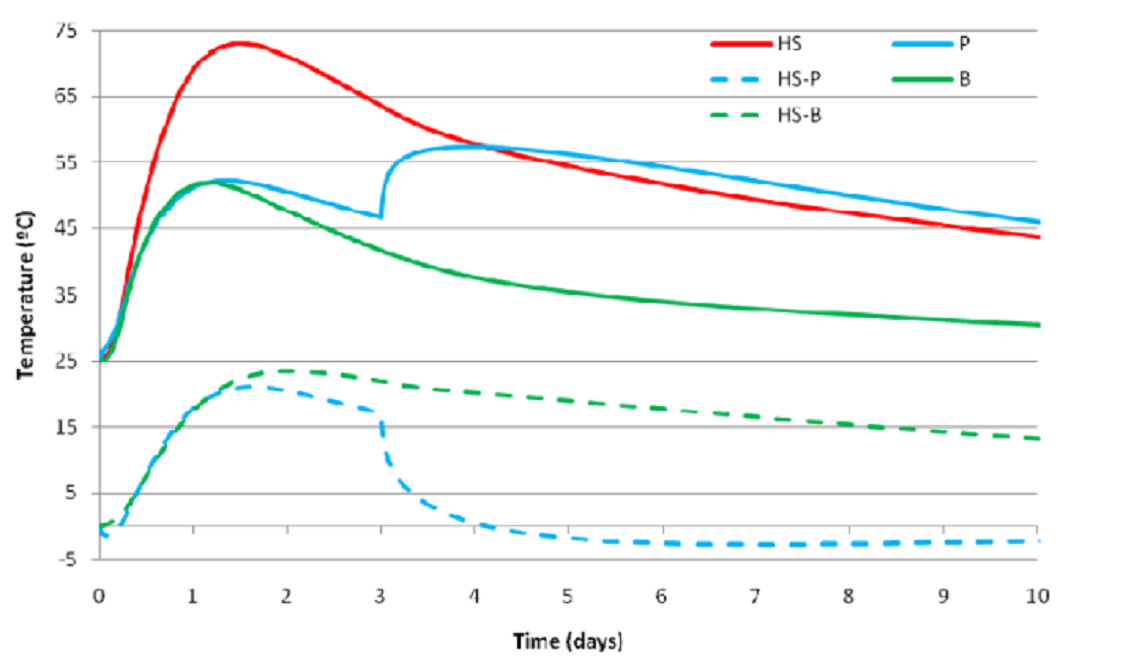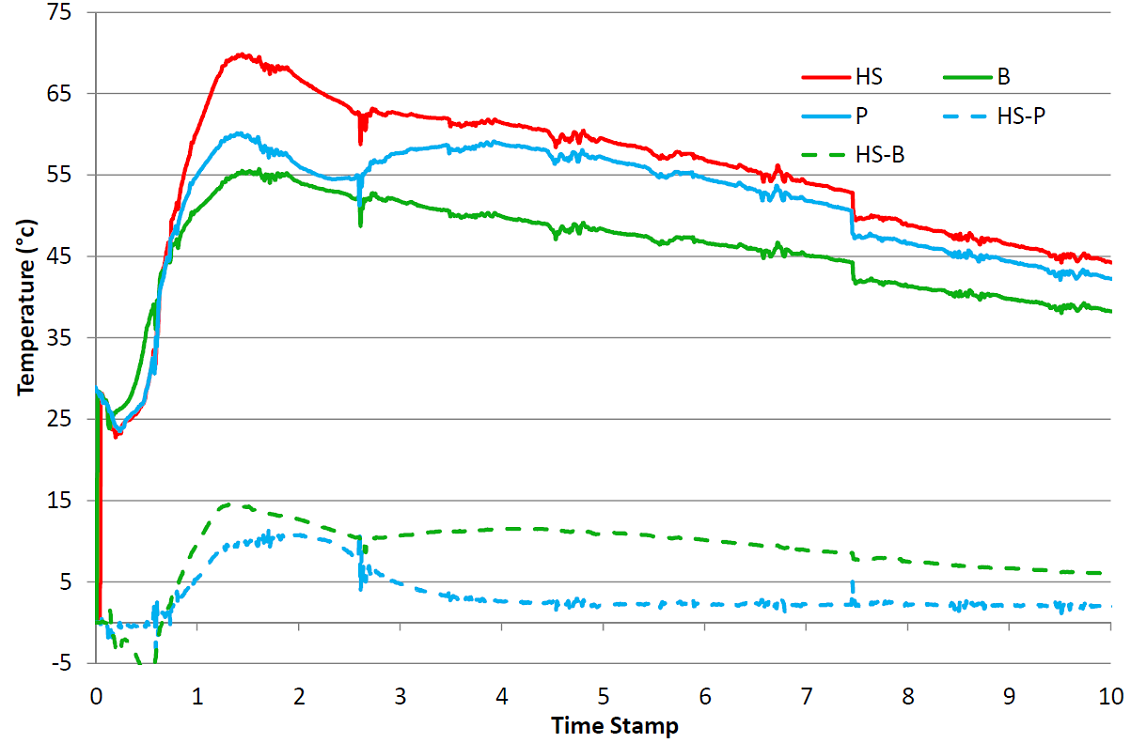Ross River Bridge
During the design and construction of large concrete elements it is important to consider how the temperature of the element will be controlled. If the peak temperature is excessive, there is a risk of delayed ettringite formation and external restraint cracking depending on the restraint condition. If the temperature differential is excessive, there is a risk of internal restraint cracking. These can lead to reduced section capacity and durability degradation. The mismanagement of concrete temperature can lead to costly and time consuming repairs on projects.
In Queensland, the monitoring and control of temperatures in large concrete pours is of significant concern due to the hot weather that is experienced especially during the summer months. Hot ambient temperatures can limit the reduction of the concrete placing temperature. It may also increase the peak concrete temperature.
The Ross River Bridge is a six span concrete Tee-roff bridge that is a part of the Townsville Port Access Road Project. The river pile caps on the project were 2.34 metres thick and 7.2 metres wide as they were required to resist the impact of a ship. The project was designed by AECOM and is being delivered by the Abigroup-Seymour Whyte Joint Venture for Transport and Main Roads.
To reduce the concrete placement temperature, the pile cap was poured overnight during November to avoid the high ambient daytime temperatures. The construction schedule did not allow for pouring during the winter months. The maximum allowable amount of ice was also added to the concrete to reduce the placing temperature. It should be noted that adding ice to a concrete mixture is often done by hand and can add considerable time to the batching process.
Thermal modeling indicated that with the limited control measures proposed to the concrete mix design and initial placing temperature, the specified peak and differential temperature limits would be exceeded. It was concluded that cooling pipes were required to keep the temperatures below the required maxima. Due to a change in the construction team over the lifespan of the project, this decision was made during the construction phase after the design of the pile cap had been completed. This added complexities into the placement of the cooling pipes around the existing pilecap reinforcement which could have been avoided if considered earlier in the design phase. Figure 1 shows the predicted temperature profile 35 hours after placement using 3 layers of 8 cooling pipes.

Figure 1: Temperature profile (ºC) at concrete peak temperature, 35 hours after concrete placement.
Figure 2 shows the predicted and recorded temperature profiles for the Hottest Spot (HS), concrete adjacent to the pipe (P) and bottom surface (B) of the pilecap. The solid lines indicate the peak temperature whilst the dashed indicate the differential temperature. The thermal modeling predicted that the peak temperature would be approximately 73⁰C and the differential 24⁰C: both below their respective limits. The recorded maximum temperature was just less than 70°C and the differential 15°C. The model indicated that the water flowing through the cooling pipes could be turned off 72 hours after the concrete has been placed. This is reflected in both graphs as a sharp increase in the temperature adjacent to the pipe after 72 hours in Figure 2. Earlier initial modeling had suggested that 4 layers of 15 pipes might be required which would have caused even more disruption to construction.

Figure 2 a). Predicted temperature profiles for the Ross River

Figure 2 b). Recorded temperature profiles for the Ross River Bridge